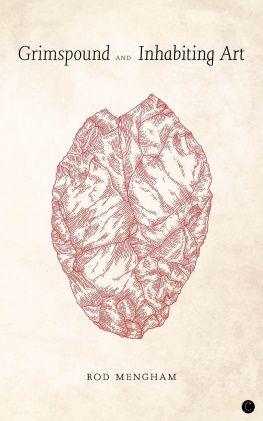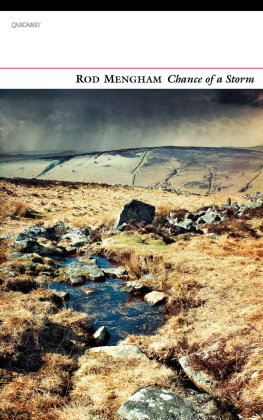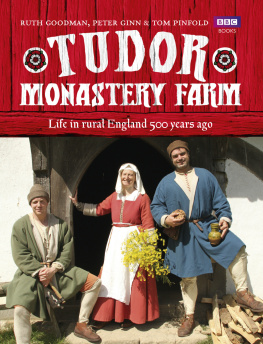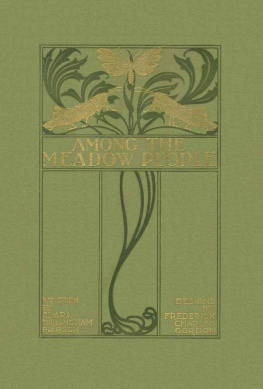Mengham - Grimspound and Inhabiting Art
Here you can read online Mengham - Grimspound and Inhabiting Art full text of the book (entire story) in english for free. Download pdf and epub, get meaning, cover and reviews about this ebook. City: Chicago, year: 2019;2018, publisher: Carcanet Press Ltd, genre: Detective and thriller. Description of the work, (preface) as well as reviews are available. Best literature library LitArk.com created for fans of good reading and offers a wide selection of genres:
Romance novel
Science fiction
Adventure
Detective
Science
History
Home and family
Prose
Art
Politics
Computer
Non-fiction
Religion
Business
Children
Humor
Choose a favorite category and find really read worthwhile books. Enjoy immersion in the world of imagination, feel the emotions of the characters or learn something new for yourself, make an fascinating discovery.
- Book:Grimspound and Inhabiting Art
- Author:
- Publisher:Carcanet Press Ltd
- Genre:
- Year:2019;2018
- City:Chicago
- Rating:4 / 5
- Favourites:Add to favourites
- Your mark:
- 80
- 1
- 2
- 3
- 4
- 5
Grimspound and Inhabiting Art: summary, description and annotation
We offer to read an annotation, description, summary or preface (depends on what the author of the book "Grimspound and Inhabiting Art" wrote himself). If you haven't found the necessary information about the book — write in the comments, we will try to find it.
Grimspound and Inhabiting Art — read online for free the complete book (whole text) full work
Below is the text of the book, divided by pages. System saving the place of the last page read, allows you to conveniently read the book "Grimspound and Inhabiting Art" online for free, without having to search again every time where you left off. Put a bookmark, and you can go to the page where you finished reading at any time.
Font size:
Interval:
Bookmark:
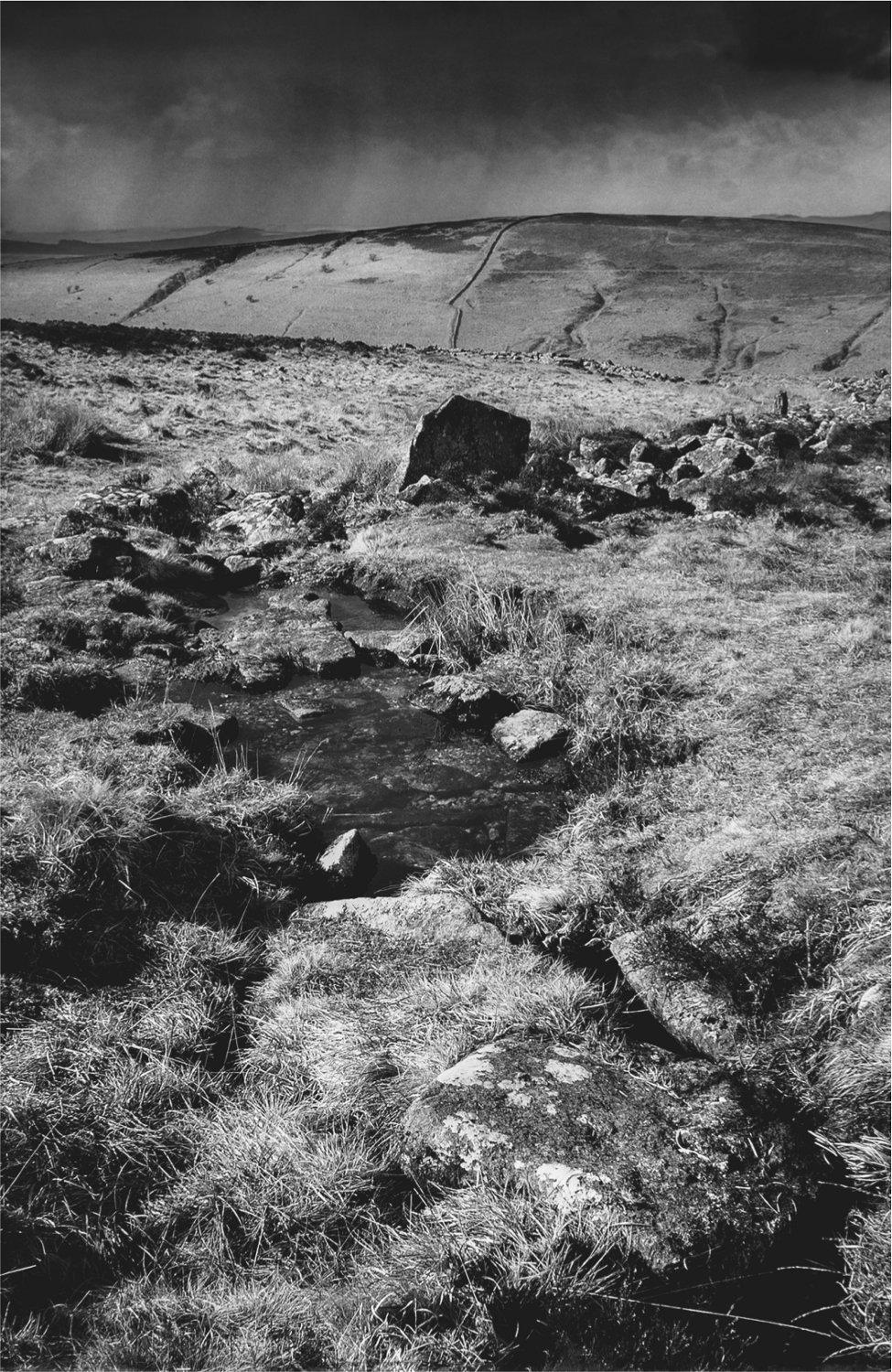
I FIRST CAME TO GRIMSPOUND in winter, in ignorance. Having parked the car, I stepped away from it and listened. There was the sound of a distant jet engine, slowly fading and gradually converting into the sound of Grimslake, the stream that runs through one quarter of Grimspound in its descent to the valley floor. The water was plunging and pouring down into a small pebble-knocking gulf; a sound falling into itself over and over again. The stream in winter is torrential, constantly undercutting its own flow, rocking all the stones on its bed, while beneath each successive fall of water, shoals of air bubbles form and re-form, like clouds under a ridge. The volume and velocity of the current creates a transparent scalloping over the broad convexities of the larger shelves of granite on the stream bed. Small channels pulse backwards and forwards across the path that climbs alongside, and in the wettest winters other areas of grass on the hillside are flattened and combed out whenever extra storm vents are needed.
Dry conditions are rare in this season, and I have experienced them only once, in November 2003, when Grimslake had shrunk to a valiant trickle, barely audible and nursing a smoothly terraced effect in the sluicing of water over stone. Here and there, the depleted flow would turn into a stutter, as if intercepted by a valve. After a long dry spell, the sudden rain when it comes loosens and booby-traps the earth, gashing it everywhere with the skid-marks of headlong sheep. When the temperature plunges, the bracken is frayed and ghostly, there are white husks of heather bloom and trails of spiderweb over the densely fossiliferous rock. The small pools of Grimslake have palisades of ice pendants, and the gelid water slides under a frozen cowl, over mossed stones. The wind carries hints of vanilla and tobacco, while tiny flecks of celestial blue minerals appear on the path, small circles of copper-blue lichen. Three mysterious clots of whitish jelly are strewn on the grass.
By Easter-time, the dead bracken is as crisp as straw, and the stream has broken free, it is making a chute near the road. I try to pick out the fretting passage of a small runnel off to one side of the main channel, the beginning of a great shift in the balance. Walking here in spring involves a series of acoustic alterations, a piloting between rising and falling levels of water splash and wind pressure, between the racket of exposed places and the detailed quiet in the lee of a boulder. Crouching down in the shadows, you can see how the exposed water weed has survived under a sheet of gel, trapping the moisture and stopping the green cells from drying out.
By early summer, the rusted tips of the ferns are uncurling, and there are bracken shoots in the middle of the path bearing their standards while others prepare to arch their necks. The first sound of Grimslake is in competition with the wind and the gargling sheep, but each pool in the streams descent is now deep enough for the water to make a plunging sound. There are tiny yellow quatrefoils dotted along the banks, while the growth of moss on rocky platforms in the stream produces a complex pattern of accelerating and decelerating pulses.
With the lowering of water supply in high summer, there are three distinct notes and volumes in the sound of water falling at separate points. The yellow quatrefoils are flourishing alongside miniature soap bush. Airborne sounds are carried from far and near: a bird unlocking a snail, then a dog barking, seconds before the hurtling fighter jet is heard. By each pool in the stream, reeds grow through overhanging festoons of heather while midget water boatmen scull round each other in a display of aquatic dodgems.
By late summer, there are multiple arches of pale bracken in the path, and no sound of water. Grimslake is silent, the stream-bed dry. In only one place is there a faint throttle and slippage under dense bunches of heather. On the water left in each pool are yellow petals that stay in place, like buoys within a bay. All the vivid green moss has been flattened into dark brown mats of rubber. The insects make hay. It is the season of feathery-headed grasses and drying thistle heads.
On the edge of autumn, Grimslake is completely hushed, with only the sound of moving grasses and washed gravel deposits of tumbled stones to speak of its other life. Gorse flowers are sheltering among the bracken, and adjacent clumps of heather show different shades of green as well as different tones of purple; the same bush might include four distinct purples. The dry earth has loosened stones of red granite thickly veined with mica. Below them are the terraces of vanished waterfalls, now spanned by gleaming spiders webs beaded with tiny globes of light.
The drama of the stream, its ebbing and flowing, with its stage-set dismantled and reconstructed every year, offers a seasonal equivalent to the much larger rhythms of this series of reflections, and is collateral to its inventions. The drama intensifies, before even the Bronze Age compound has been reached, in the story of a tree and its nest. This ancient, lowly thorn tree, with many fractured limbs now dressed with great plasters of moss, leans over the stream. At the base of the channel where it is bowed, granite boulders are packed round with smaller, less rounded, stones of terracotta colour, and it must be the percolation system these provide which puts life into half the available boughs. Less than eight feet off the ground, the boughs support a great nest swung to and fro in the wind. The nest seems as old as the tree, and indeed the branches in their growth have twisted round and round and round each other, as if in imitation of its structure. In winter, both carry government-issue camouflage of russet and green moss, while in summer there is a flourish of olive pale leaves, advanced on by reconnoitring slugs. Even in the driest spells, the gnarled roots of the thorn are able to detect the faintest rill of fresh water, where the small birds drink. After four years of visiting, I returned to the site one winter to find the nest still there, but showing no sign of refurbishment. Despite this neglect, it was a shock to me, the following year, the shock of disbelief, to have to accept that the nest was finally undone, carried away by winter storms. Without my realising, it had been a sheet-anchor, now no more than a speculative probe, a sign of habitation deleted without trace, the landscape re-forming quickly and irretrievably to forget it. Two years on, and a replacement had been built, with heather roots lined with earth and copper-coloured lichen. I was excited, but this rhythm of uncertainty is now one of the reasons I cannot go back in itself a strange hesitancy to arise from this compulsion I have to stand among ruins.
I never hesitate over my entry point into the citadel. I use that word because the thought of Mycenae arrived, unbidden, with my first sight of the great, cyclopean stones of the eastern entrance to Grimspound. But I do not use the original gate, steering instead through a gap in the wall-rubble that gives onto an area set aside for a stockpen. There is a second, much more feral, stock pen in the south-west corner of the site, but that has little power over me. Here, along the main wall of the compound, flat stones have been placed to the interior, giving the impression of having been dressed, and there are always strands of wool clinging to the largest of the level blocks, showing me that sheep still use the pen, out of long habit. Better still, after heavy rain, there are sumps of clear water filling hoofshapes in the mud, to record the fact that horses also use the area.
Font size:
Interval:
Bookmark:
Similar books «Grimspound and Inhabiting Art»
Look at similar books to Grimspound and Inhabiting Art. We have selected literature similar in name and meaning in the hope of providing readers with more options to find new, interesting, not yet read works.
Discussion, reviews of the book Grimspound and Inhabiting Art and just readers' own opinions. Leave your comments, write what you think about the work, its meaning or the main characters. Specify what exactly you liked and what you didn't like, and why you think so.

